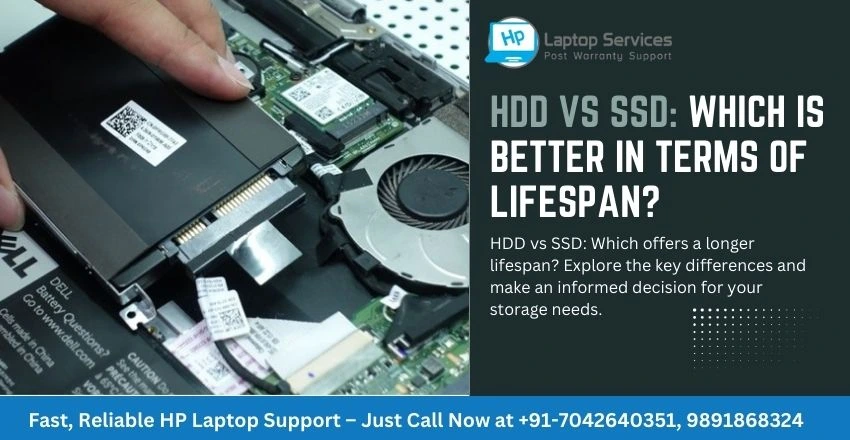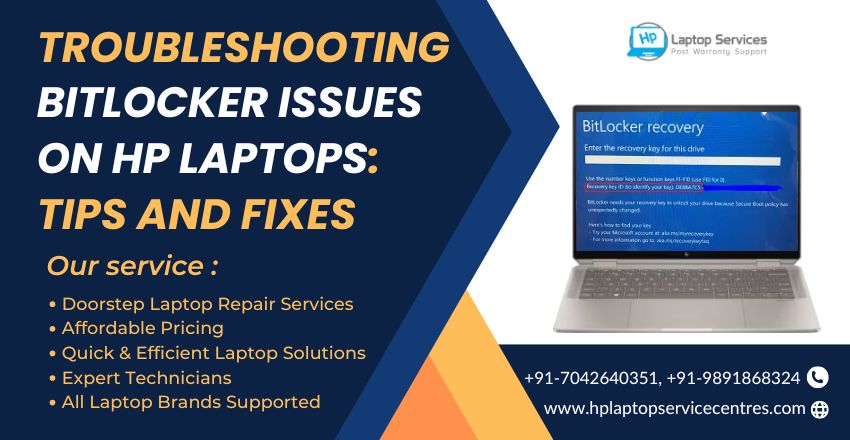Call Us: +91-7042640351, 9891868324
HDD vs SSD: Which is Better in Terms of Lifespan?
By Admin | 10 May 2024

In the ever-evolving realm of data storage, the comparison between HDD (Hard Disk Drive) and S.S.D. (Solid State Drive) has become a staple discourse, particularly regarding lifespan. Users often consider which option offers better longevity for their precious data. This article delves into the intricate landscape of hard disk vs. ssd lifespan, shedding light on critical factors and considerations that influence their durability.
Hard Disk v/s SSD Lifespan Comparison:
Understanding the fundamental differences between HDDs and S.S.D.s is crucial to understanding the longevity of storage devices. HDDs rely on spinning magnetic disks and mechanical arms to read and write data, while S.S.D.s utilize flash memory chips for data storage, devoid of moving parts. This fundamental contrast sets the stage for a deeper exploration of their respective lifespans.
Solid State Drive Lifespan:
S.S.D.s, without mechanical components, are renowned for their resilience to physical wear and tear. The primary determinant of an S.S.D.'s lifespan is its program/erase (P/E) cycles, referring to the number of times data can be written and erased on the drive before it becomes unreliable. Modern S.S.D.s boast impressive P/E cycle ratings, often ranging in the hundreds of thousands or even millions. Additionally, advancements in S.S.D. technology, such as wear-leveling algorithms and over-provisioning, prolong their operational lifespan by distributing write operations evenly across memory cells and minimizing degradation.
However, it's essential to acknowledge that S.S.D.s have a finite lifespan, albeit significantly longer than traditional HDDs. Over time and with extensive usage, an S.S.D.'s performance may gradually degrade, manifesting as slower read/write speeds or potential data corruption. Despite this, most users find that the lifespan of an S.S.D. comfortably exceeds their typical usage requirements, making it a reliable choice for everyday computing tasks.
Hard Disk Drive Lifespan:
In contrast, HDDs are characterized by their mechanical nature, which inherently introduces points of failure and susceptibility to wear over time. The primary components prone to failure in HDDs include the spinning platters and the read/write heads, which are susceptible to damage from physical shocks, temperature fluctuations, and general wear from continuous operation.
The lifespan of an HDD is often measured in operating hours, typically ranging from tens of thousands to hundreds of thousands of hours, depending on factors such as drive quality, usage patterns, and environmental conditions. While modern HDDs are engineered to withstand rigorous usage, they are still inherently more prone to mechanical failure than their S.S.D. counterparts.
Factors Influencing Lifespan:
Several factors influence the lifespan of both HDDs and S.S.D.s, warranting careful consideration for users seeking to maximize the longevity of their storage solution:
1. Usage Patterns: Heavy write-intensive workloads like video editing or database management can accelerate wear on S.S.D.s due to frequent data writes. Similarly, HDD continuous operation in high-demand environments can hasten mechanical wear and reduce lifespan.
2. Environmental Conditions: Temperature extremes, humidity levels, and exposure to physical shock can impact the lifespan of both HDDs and S.S.D.s. Proper ventilation and temperature regulation are crucial for maintaining optimal storage conditions.
3. Quality of Components: The quality of components used in manufacturing plays a significant role in determining the lifespan of storage devices. Higher-quality materials and rigorous testing processes often result in more durable drives with longer operational lifespans.
4. Endurance Ratings: Manufacturers often provide endurance ratings or warranty periods for S.S.D.s, indicating the expected lifespan under typical usage conditions. Users should consult these specifications when evaluating the longevity of S.S.D.s for their specific needs.
Learn More: Solid State Drives and Hard Disk Drives: Which is Best for Your Laptop?
What signs indicate it's time to replace S.S.D. or HDD?
Despite their differences in technology and construction, HDDs and S.S.D.s exhibit similar signs when approaching the end of their lifespan. Recognizing these indicators is crucial for preemptive measures to safeguard data integrity and prevent potential data loss.
Performance Degradation: Sluggish performance, increased access times, and frequent system freezes or crashes are common indicators of impending storage device failure. Users may notice a gradual decline in overall system responsiveness as the storage device approaches the end of its lifespan.
Noise and Vibrations: Mechanical HDDs often emit audible noises such as clicking, grinding, or whirring when experiencing mechanical issues or imminent failure. Similarly, S.S.D.s may exhibit abnormal vibrations or buzzing sounds, signalling underlying hardware problems.
Bad Sectors and Data Corruption: As they near the end of their lifespan, both HDDs and S.S.D.s may develop bad sectors or experience data corruption. Users may encounter errors while accessing files or notice corruption, indicating potential storage device failure.
S.M.A.R.T. Warnings: Self-Monitoring, Analysis, and Reporting Technology (S.M.A.R.T.) is a built-in diagnostic feature in most modern HDDs and S.S.D.s. Monitoring S.M.A.R.T. attributes can provide valuable insights into the health and lifespan of the storage device, with warning messages alerting users to potential hardware failures or imminent issues.
Read More: How Much Does an SSD Replacement Cost?
Our Support Cities :- Delhi | Noida | Gurgaon | Ghaziabad | Faridabad | Greator Noida | Mumbai | Pune | Kolkata | Ahmedabad
Conclusion:
In the perennial debate of HDD vs. S.S.D., lifespan is significant for users seeking reliable, durable storage solutions. While HDDs and S.S.D.s differ in technology and construction, both offer unique advantages and considerations regarding lifespan and reliability.
Ultimately, the choice between HDDs and S.S.D.s should be guided by usage requirements, performance preferences, and budget considerations. By understanding the nuances of HDD vs S.S.D. lifespans and recognizing the signs of impending storage device failure, users can make informed decisions to ensure data integrity and longevity in their computing endeavours.
Looking For A Fast & Reliable Laptop Repair Service
We have professional technicians, fast turnaround times and affordable rates. Book Your Repair Job Today!















